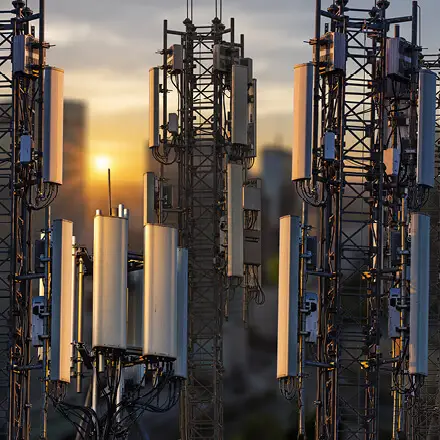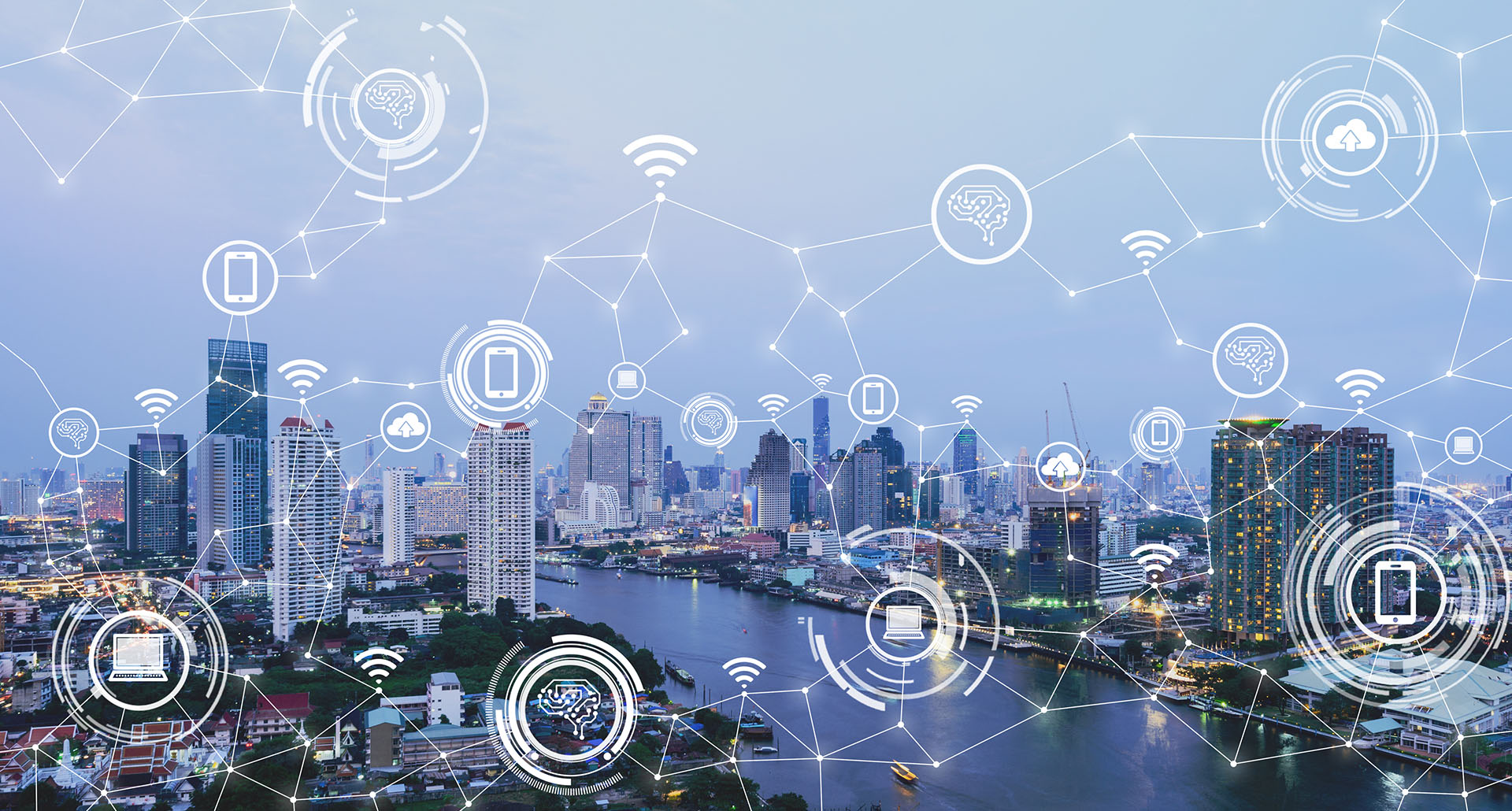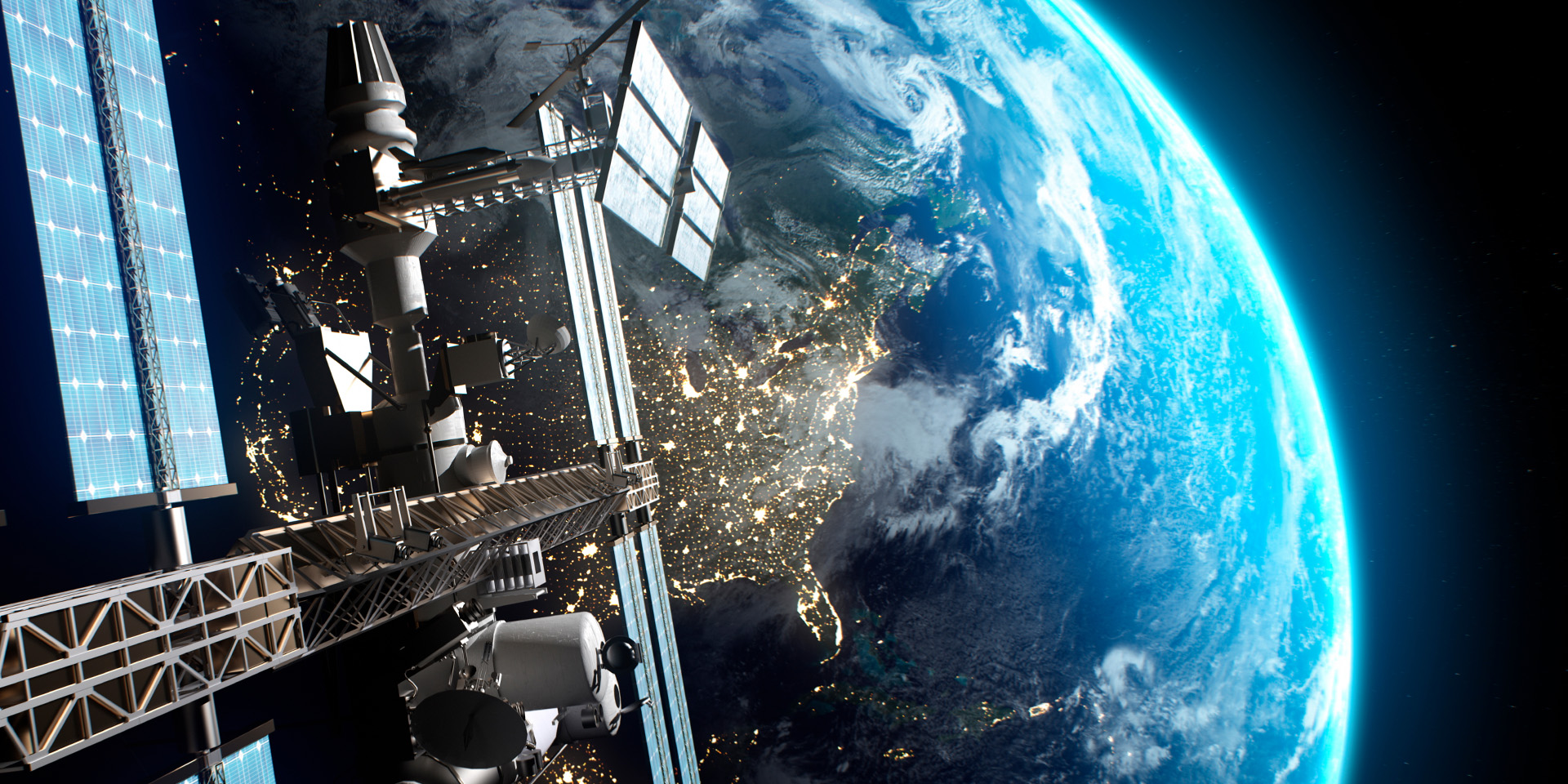Published on 6 February 2023
Smart city – 5G makes connected cities a possibility
A smart city aims to improve urban sustainability, save energy and make everything more convenient. But what exactly is a smart city?
In principle, a smart city is the next step up from a smart home. In a smart home, all digital devices communicate with each other: you can use your smartphone to control Alexa, the heating and the coffee machine, while your fridge sends messages to your mobile phone and the robot vacuum and robot lawn mower notify you when they’re done. Everything is connected to everything else.
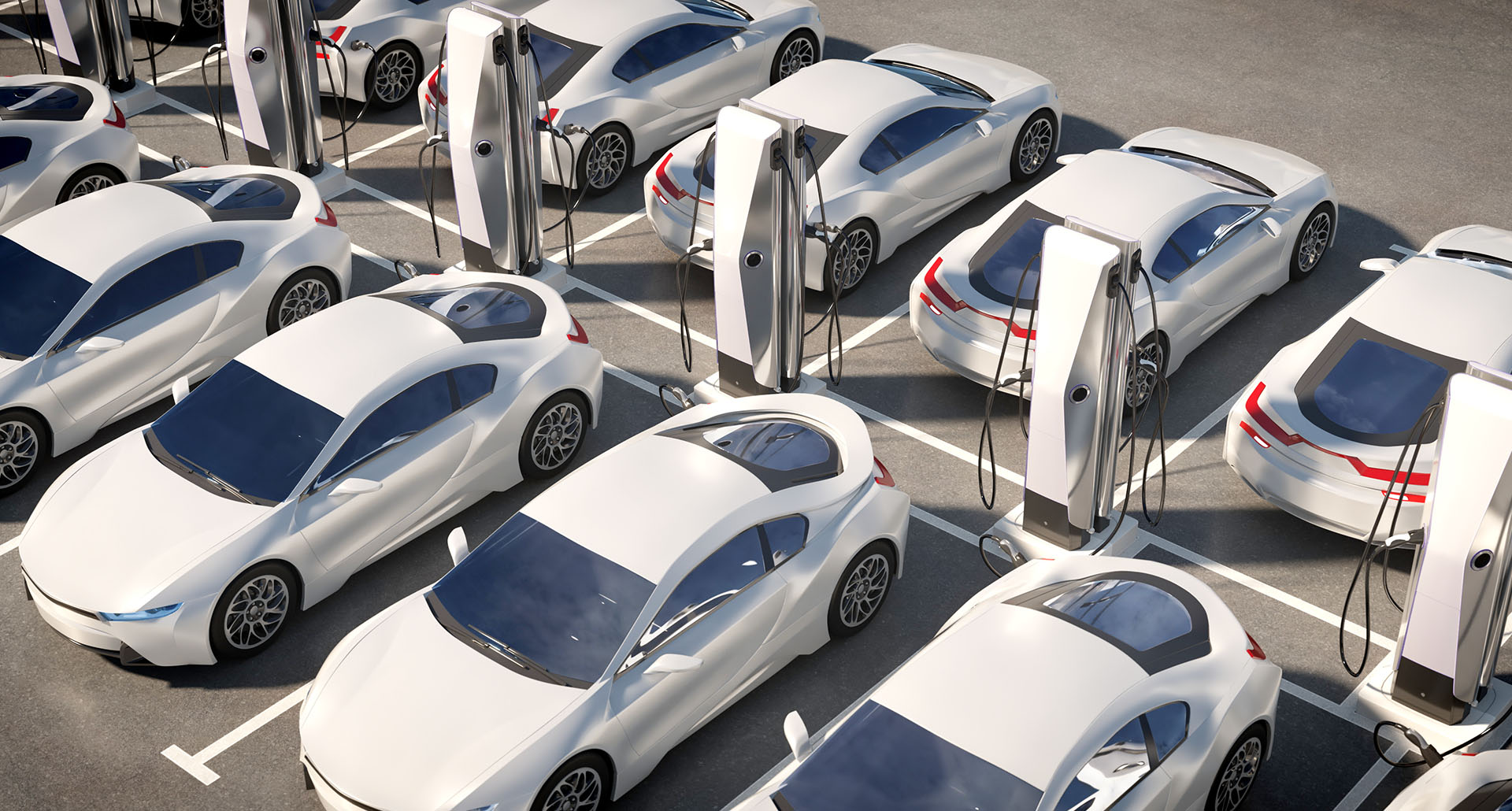
A smart city works very much like this, just on a much larger scale and exclusively through the 5G network. From smart parking and smart lighting to smart waste disposal – in a smart city, almost everything is controlled and thought through down to the smallest detail. Each street light controls itself, dimming or switching itself off if there are no cars, cyclists or pedestrians on the road. So it only switches on when light is needed – thus saving energy.
But smart street lights can do so much more than that: they can use integrated sensors to measure the flow of traffic, helping to optimise navigation systems in cars. Smart lights can also be used as Wi-Fi hotspots and charging stations for e-cars, e-bikes or e-scooters. Integrated pollution sensors measure contaminants like particulate matter in the air. This makes smart city street lights into digital all-rounders.
More about particulate matter
Also cleverly designed in a smart city are its waste containers. They use sensors to notify the provider when they are full and can then be emptied. This saves the refuse collectors unnecessary trips. The latest generation of waste containers can even distinguish plastic from organic waste and separate different kinds of refuse.
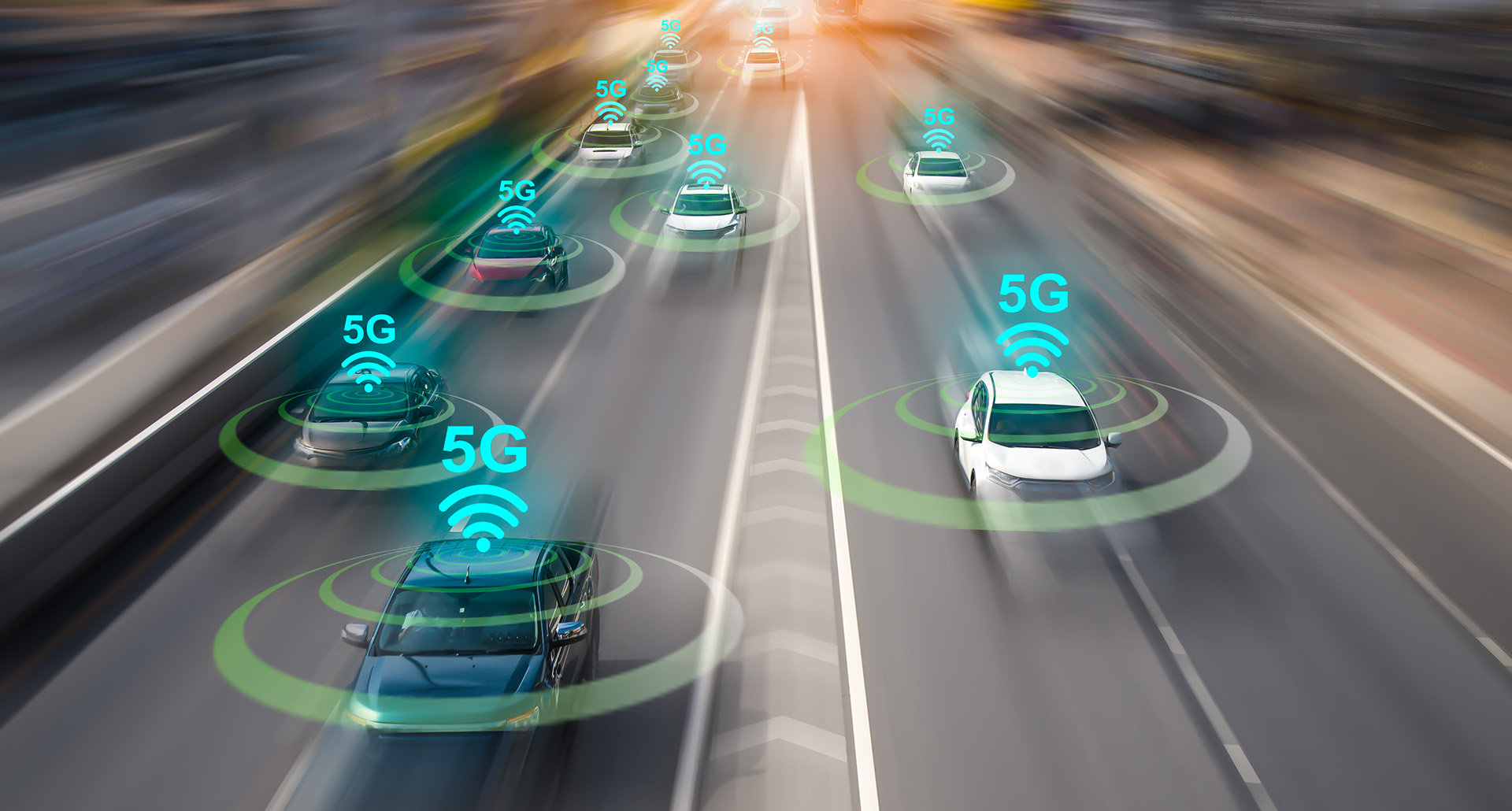
Smart traffic solutions and autonomous driving also form part of a smart city that is fully connected via 5G. An app can find and reserve a free parking space, for example. Self-driving cars communicate with each other, the idea being to avoid accidents and traffic jams. But because the cars also communicate with traffic lights and street signs, a self-controlling and self-regulating traffic network is emerging that promises more efficiency and less CO2. Because electric cars go hand in hand with smart cities.
More about e-cars
.jpg)
It’s about so much more than private e-mails. It’s about the most sensitive data that is used to generate an algorithm, or, to be precise, millions of algorithms. What medication you need, how much money you have in your account, etc. Data dealers use this data to create consumer profiles and algorithms.
For example, when someone is looking for a new jacket, the algorithm knows what colour and brand they prefer, what size they wear and how much money they can spend. Based on this knowledge, the consumer is then given product suggestions as soon as they go online on their smartphone, tablet or laptop.
This can be useful when it comes to online shopping. But what if the algorithm knows that someone is short of cash and then sends them offers for loans? Or that someone else is currently dealing with issues like living wills and organ donation? Can the Internet really be of use in those cases, or is it in fact harmful? After all, the Internet doesn’t only provide us with knowledge – it also gives us errors and fake news.
.jpg)
What actually happens to our health when we are surrounded by 5G 24/7 and everything is connected to everything else? We are already constantly connected to the Internet via Wi-Fi. In a smart city, where data has to flow around the clock to keep traffic moving, for example, this is only possible with 5G.
5G guarantees the transmission of even large amounts of data in real time. However, as 5G only works over relatively short distances, up to ten times more transmission masts are needed to allow data transmission without interruptions around the clock.
In addition to tens of thousands of additional antennae, each smartphone, laptop, WiFi hotspot and Bluetooth connection generates electromagnetic radiation (electrosmog) – to the extent that our body can no longer compensate for it. And that has consequences.
More about 5G
That’s why it’s now particularly important to protect ourselves from electromagnetic radiation (electrosmog), which has increased many times over with 5G and is around us all the time – even if we don’t have our smartphone, laptop or tablet on us. memon technology compensates for the negative effects of electrosmog so that we can continue to use modern technology.
More about memon technology
In principle, a smart city is the next step up from a smart home. In a smart home, all digital devices communicate with each other: you can use your smartphone to control Alexa, the heating and the coffee machine, while your fridge sends messages to your mobile phone and the robot vacuum and robot lawn mower notify you when they’re done. Everything is connected to everything else.
From lights to e-bikes – everything is smart

A smart city works very much like this, just on a much larger scale and exclusively through the 5G network. From smart parking and smart lighting to smart waste disposal – in a smart city, almost everything is controlled and thought through down to the smallest detail. Each street light controls itself, dimming or switching itself off if there are no cars, cyclists or pedestrians on the road. So it only switches on when light is needed – thus saving energy.
But smart street lights can do so much more than that: they can use integrated sensors to measure the flow of traffic, helping to optimise navigation systems in cars. Smart lights can also be used as Wi-Fi hotspots and charging stations for e-cars, e-bikes or e-scooters. Integrated pollution sensors measure contaminants like particulate matter in the air. This makes smart city street lights into digital all-rounders.
More about particulate matter
Also cleverly designed in a smart city are its waste containers. They use sensors to notify the provider when they are full and can then be emptied. This saves the refuse collectors unnecessary trips. The latest generation of waste containers can even distinguish plastic from organic waste and separate different kinds of refuse.
Traffic controlled by an app

Smart traffic solutions and autonomous driving also form part of a smart city that is fully connected via 5G. An app can find and reserve a free parking space, for example. Self-driving cars communicate with each other, the idea being to avoid accidents and traffic jams. But because the cars also communicate with traffic lights and street signs, a self-controlling and self-regulating traffic network is emerging that promises more efficiency and less CO2. Because electric cars go hand in hand with smart cities.
More about e-cars
5G, data and the algorithm
For a complex smart city system to work, two factors are crucial: 5G and a lot of data.. Because the system only works if everything is connected and data is continuously transmitted. The smart city thus essentially means digital transformation in all areas of life..jpg)
It’s about so much more than private e-mails. It’s about the most sensitive data that is used to generate an algorithm, or, to be precise, millions of algorithms. What medication you need, how much money you have in your account, etc. Data dealers use this data to create consumer profiles and algorithms.
For example, when someone is looking for a new jacket, the algorithm knows what colour and brand they prefer, what size they wear and how much money they can spend. Based on this knowledge, the consumer is then given product suggestions as soon as they go online on their smartphone, tablet or laptop.
This can be useful when it comes to online shopping. But what if the algorithm knows that someone is short of cash and then sends them offers for loans? Or that someone else is currently dealing with issues like living wills and organ donation? Can the Internet really be of use in those cases, or is it in fact harmful? After all, the Internet doesn’t only provide us with knowledge – it also gives us errors and fake news.
Exposure to electrosmog
.jpg)
What actually happens to our health when we are surrounded by 5G 24/7 and everything is connected to everything else? We are already constantly connected to the Internet via Wi-Fi. In a smart city, where data has to flow around the clock to keep traffic moving, for example, this is only possible with 5G.
5G guarantees the transmission of even large amounts of data in real time. However, as 5G only works over relatively short distances, up to ten times more transmission masts are needed to allow data transmission without interruptions around the clock.
In addition to tens of thousands of additional antennae, each smartphone, laptop, WiFi hotspot and Bluetooth connection generates electromagnetic radiation (electrosmog) – to the extent that our body can no longer compensate for it. And that has consequences.
More about 5G
Berlin, Mannheim and Regensburg as smart cities
Still, the smart city isn’t just something that might happen some time in the future – it’s already being implemented in many cities around the world. The smart city concept is also being promoted in Germany, in cities including Berlin, Wolfsburg, Mannheim, Freiburg, Kassel, Bamberg, Münster and Regensburg. Other cities around the world are even being designed as smart cities from the ground up. As examples, India is also planning 100 smart cities, while in Abu Dhabi, Smart City Masdar is under construction. South Korea is building Songdo smart city, where all residents will have chip cards to ensure 100 percent connectivity.memon compensates
In many areas of our lives – our smart homes or modern offices, for example – it’s already almost as if we live in smart cities. We drive electric cars and use smartphones, laptops, tablets and countless other digital devices every day because they make our day-to-day life and work easier – especially when we’re working from home.That’s why it’s now particularly important to protect ourselves from electromagnetic radiation (electrosmog), which has increased many times over with 5G and is around us all the time – even if we don’t have our smartphone, laptop or tablet on us. memon technology compensates for the negative effects of electrosmog so that we can continue to use modern technology.
More about memon technology

